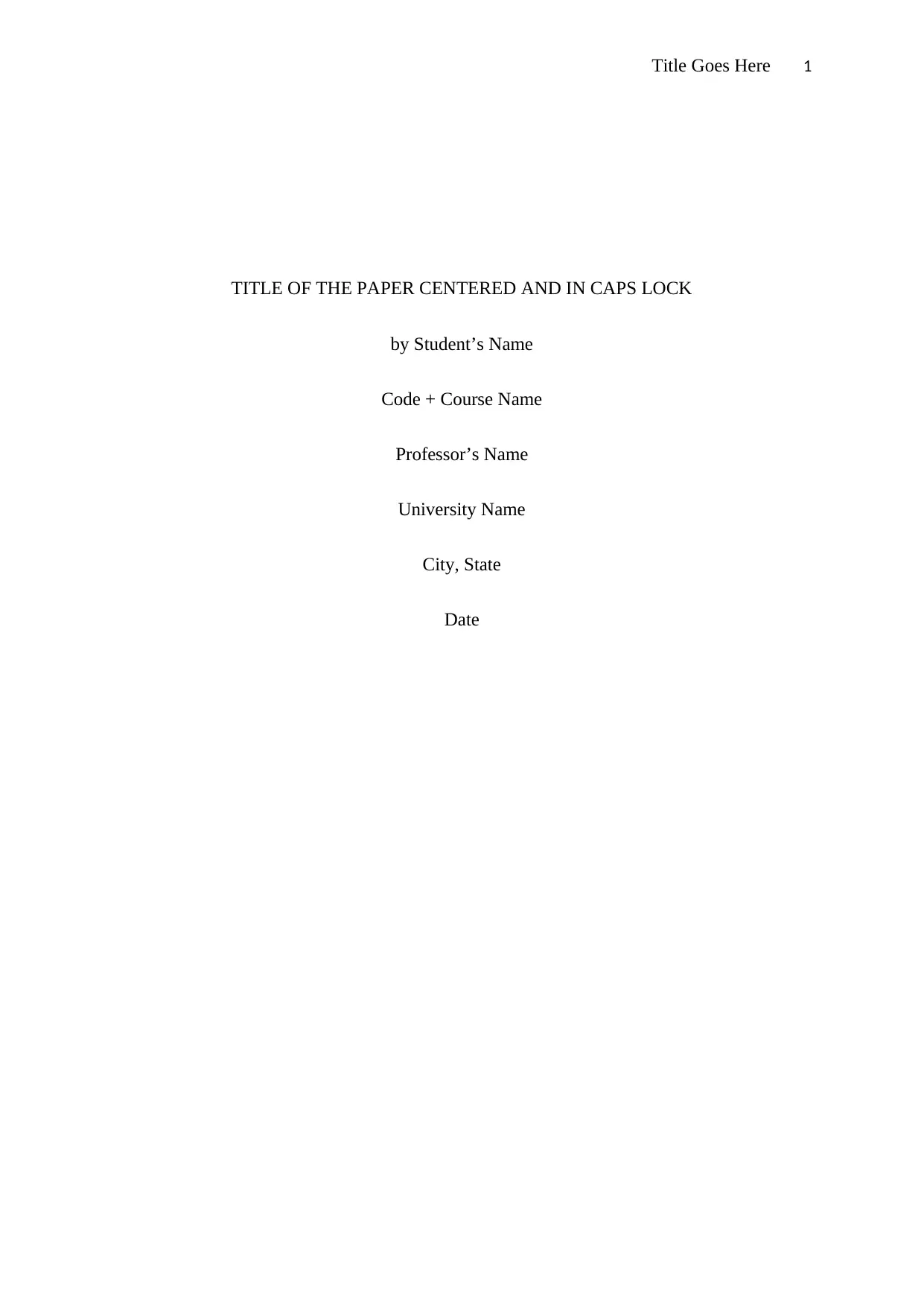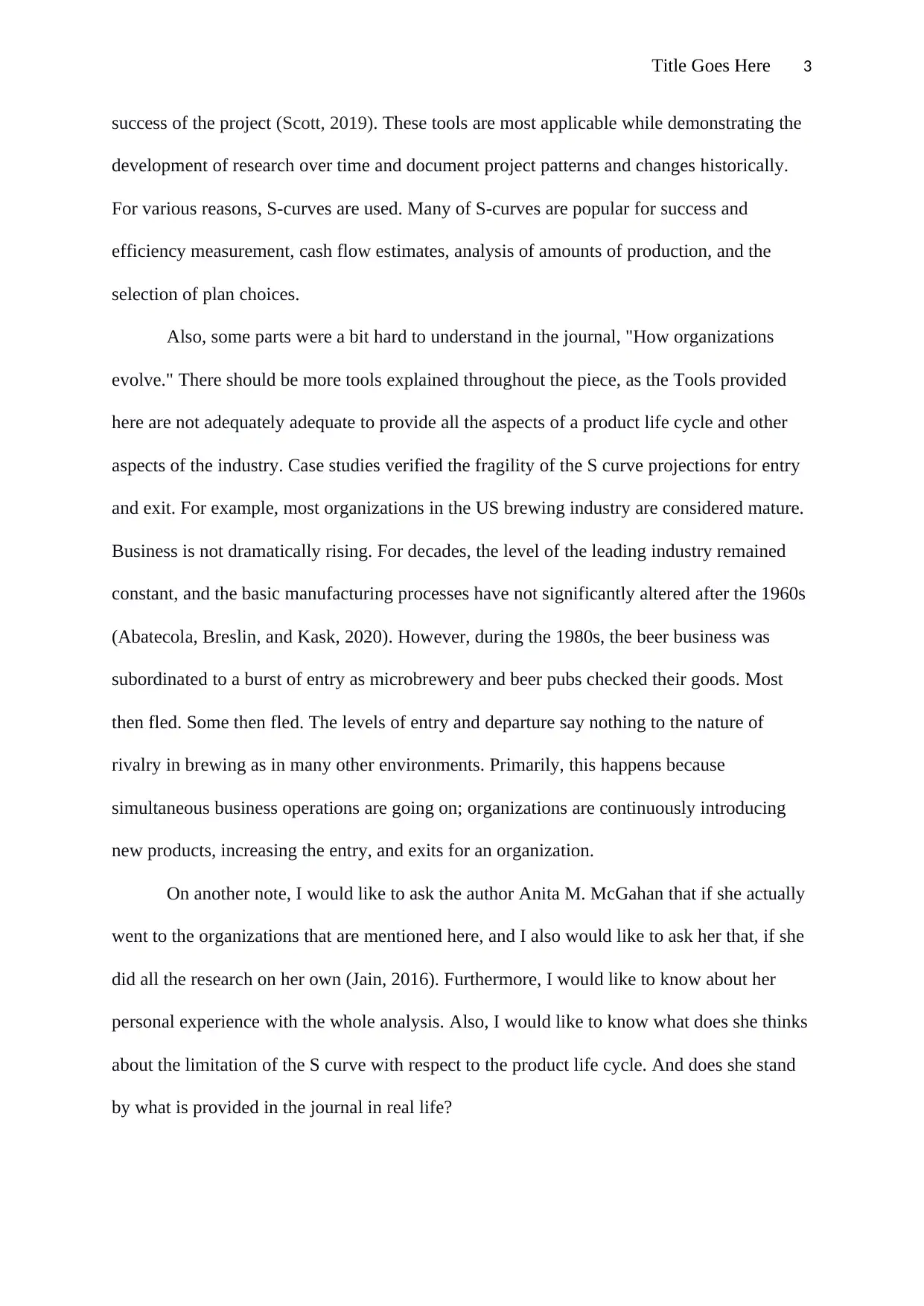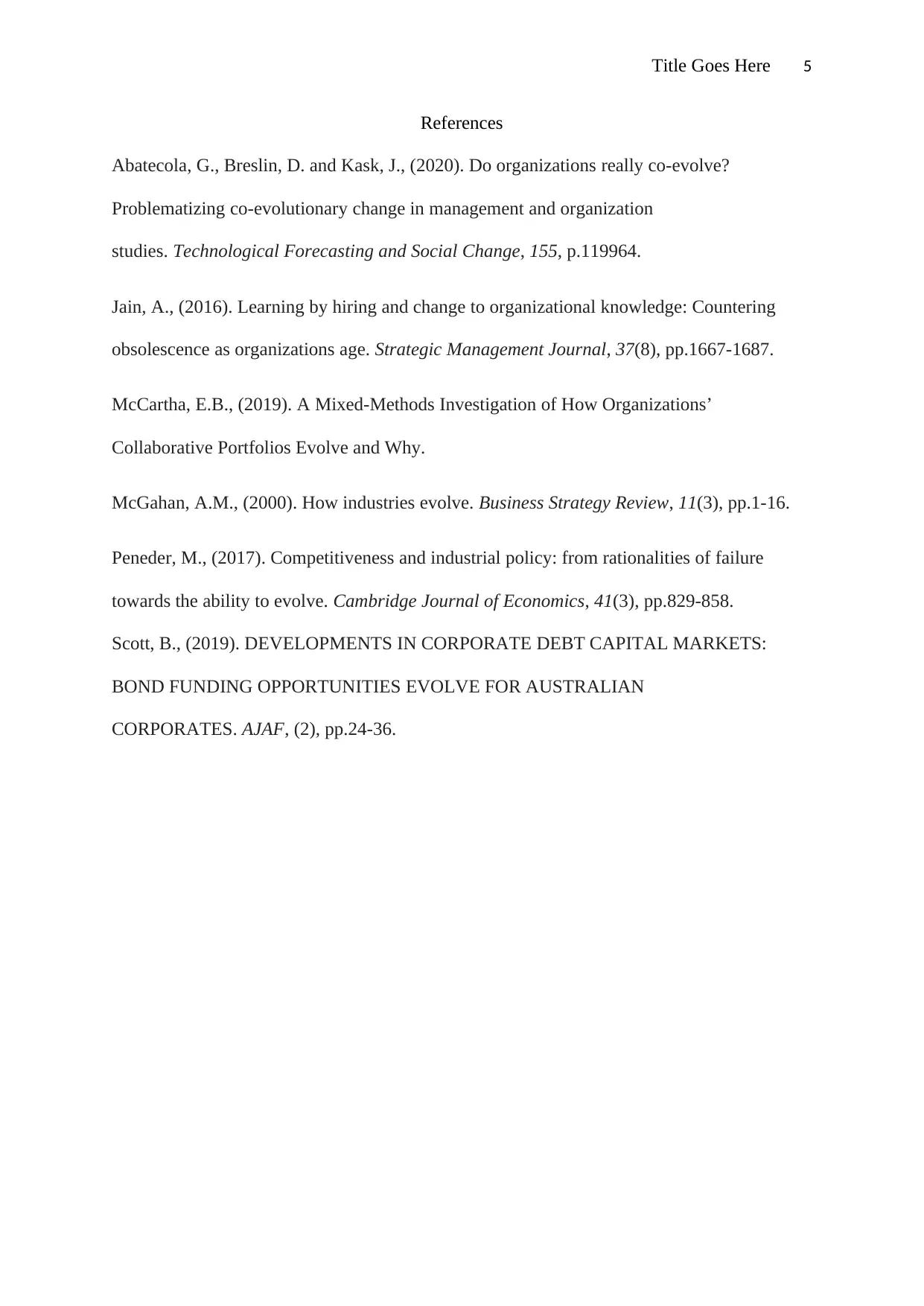Reflection on McGahan's 'How Industries Evolve' Article
VerifiedAdded on 2022/09/14
|5
|1049
|13
Discussion Board Post
AI Summary
This assignment is a student's reflection on Anita McGahan's article, 'How Industries Evolve,' published in the Business Strategy Review in 2000. The student summarizes McGahan's core argument that businesses can improve efficiency by tailoring expenditure to market developments. The reflection analyzes the four fundamental models of market development: 'receiving,' 'blockbuster,' 'pure revolutionary,' and 'inner mediation,' and critiques the use of S-curves in product life cycle analysis. The author highlights the importance of rigorous research and the ever-changing nature of industries. The student also poses questions to the author regarding her research methods and personal experiences, and the limitations of the S-curve. The reflection also provides a brief overview of the assignment brief, highlighting the importance of academic rigor and research around the assigned article.

Title Goes Here 1
TITLE OF THE PAPER CENTERED AND IN CAPS LOCK
by Student’s Name
Code + Course Name
Professor’s Name
University Name
City, State
Date
TITLE OF THE PAPER CENTERED AND IN CAPS LOCK
by Student’s Name
Code + Course Name
Professor’s Name
University Name
City, State
Date
Paraphrase This Document
Need a fresh take? Get an instant paraphrase of this document with our AI Paraphraser

Title Goes Here 2
About the Author: The author, Anita McGahan, is a Professor of Strategic
Management and George E. Connell Chair in Organizations & Society at Rotman (with a
cross-appointment to the Munk School of Global Affairs). Her work focuses on increasing
trade, sustainable competitive edge, and the development of new markets. She works on
public wellbeing and the sharing of information through international borders. She has been
doing research work. She has previously done collaborative works with prolific modern age
researchers like Margaret K. Kyle, Brian S. Silverman, and Joel A.C. Baum.
Title of the Article: How Industries Evolve. Business Strategy Review, 11(3), 1-16. Written
by Anita McGahan in the year 2000.
Reflection of the Article
Through tailoring expenditure to push market developments instead of battling them,
businesses will boost their efficiency. This article clarifies how the better success of firms
depends on recognizing the nature of industries (Peneder, 2017). While doing that, the key
structures of measurement like the five powers and the product life-cycle concept of S‐curve
are considered inadequate. The author describes the four fundamental models of market
development that she terms 'receiving,' 'blockbuster,' 'pure revolutionary,' and 'inner
mediation' cantered upon extensive fieldwork and observational analysis (McGahan, 2000).
Each kind of evolution involves specific types of risks, and each carries different implications
for the relevance of established capabilities and investment priorities.
Furthermore, I liked most the part where she connects the practical trend of a product
life cycle in business through the S curve and other analytic tools. S-curves and the additional
analytic tools mentioned in this journal are ideal methods for the interactive project
management to schedule, track, track, assess, and forecast the progress, progression, and
About the Author: The author, Anita McGahan, is a Professor of Strategic
Management and George E. Connell Chair in Organizations & Society at Rotman (with a
cross-appointment to the Munk School of Global Affairs). Her work focuses on increasing
trade, sustainable competitive edge, and the development of new markets. She works on
public wellbeing and the sharing of information through international borders. She has been
doing research work. She has previously done collaborative works with prolific modern age
researchers like Margaret K. Kyle, Brian S. Silverman, and Joel A.C. Baum.
Title of the Article: How Industries Evolve. Business Strategy Review, 11(3), 1-16. Written
by Anita McGahan in the year 2000.
Reflection of the Article
Through tailoring expenditure to push market developments instead of battling them,
businesses will boost their efficiency. This article clarifies how the better success of firms
depends on recognizing the nature of industries (Peneder, 2017). While doing that, the key
structures of measurement like the five powers and the product life-cycle concept of S‐curve
are considered inadequate. The author describes the four fundamental models of market
development that she terms 'receiving,' 'blockbuster,' 'pure revolutionary,' and 'inner
mediation' cantered upon extensive fieldwork and observational analysis (McGahan, 2000).
Each kind of evolution involves specific types of risks, and each carries different implications
for the relevance of established capabilities and investment priorities.
Furthermore, I liked most the part where she connects the practical trend of a product
life cycle in business through the S curve and other analytic tools. S-curves and the additional
analytic tools mentioned in this journal are ideal methods for the interactive project
management to schedule, track, track, assess, and forecast the progress, progression, and

Title Goes Here 3
success of the project (Scott, 2019). These tools are most applicable while demonstrating the
development of research over time and document project patterns and changes historically.
For various reasons, S-curves are used. Many of S-curves are popular for success and
efficiency measurement, cash flow estimates, analysis of amounts of production, and the
selection of plan choices.
Also, some parts were a bit hard to understand in the journal, "How organizations
evolve." There should be more tools explained throughout the piece, as the Tools provided
here are not adequately adequate to provide all the aspects of a product life cycle and other
aspects of the industry. Case studies verified the fragility of the S curve projections for entry
and exit. For example, most organizations in the US brewing industry are considered mature.
Business is not dramatically rising. For decades, the level of the leading industry remained
constant, and the basic manufacturing processes have not significantly altered after the 1960s
(Abatecola, Breslin, and Kask, 2020). However, during the 1980s, the beer business was
subordinated to a burst of entry as microbrewery and beer pubs checked their goods. Most
then fled. Some then fled. The levels of entry and departure say nothing to the nature of
rivalry in brewing as in many other environments. Primarily, this happens because
simultaneous business operations are going on; organizations are continuously introducing
new products, increasing the entry, and exits for an organization.
On another note, I would like to ask the author Anita M. McGahan that if she actually
went to the organizations that are mentioned here, and I also would like to ask her that, if she
did all the research on her own (Jain, 2016). Furthermore, I would like to know about her
personal experience with the whole analysis. Also, I would like to know what does she thinks
about the limitation of the S curve with respect to the product life cycle. And does she stand
by what is provided in the journal in real life?
success of the project (Scott, 2019). These tools are most applicable while demonstrating the
development of research over time and document project patterns and changes historically.
For various reasons, S-curves are used. Many of S-curves are popular for success and
efficiency measurement, cash flow estimates, analysis of amounts of production, and the
selection of plan choices.
Also, some parts were a bit hard to understand in the journal, "How organizations
evolve." There should be more tools explained throughout the piece, as the Tools provided
here are not adequately adequate to provide all the aspects of a product life cycle and other
aspects of the industry. Case studies verified the fragility of the S curve projections for entry
and exit. For example, most organizations in the US brewing industry are considered mature.
Business is not dramatically rising. For decades, the level of the leading industry remained
constant, and the basic manufacturing processes have not significantly altered after the 1960s
(Abatecola, Breslin, and Kask, 2020). However, during the 1980s, the beer business was
subordinated to a burst of entry as microbrewery and beer pubs checked their goods. Most
then fled. Some then fled. The levels of entry and departure say nothing to the nature of
rivalry in brewing as in many other environments. Primarily, this happens because
simultaneous business operations are going on; organizations are continuously introducing
new products, increasing the entry, and exits for an organization.
On another note, I would like to ask the author Anita M. McGahan that if she actually
went to the organizations that are mentioned here, and I also would like to ask her that, if she
did all the research on her own (Jain, 2016). Furthermore, I would like to know about her
personal experience with the whole analysis. Also, I would like to know what does she thinks
about the limitation of the S curve with respect to the product life cycle. And does she stand
by what is provided in the journal in real life?
⊘ This is a preview!⊘
Do you want full access?
Subscribe today to unlock all pages.

Trusted by 1+ million students worldwide

Title Goes Here 4
Conclusively I would like to add that. However, relevant research is, having research
work done on the changing and current industry trends are always very important. It is
essential because the industries and businesses are ever-changing throughout their life cycle.
Furthermore, all the aspects of the business like new and old products business operations are
changing with time (McCartha, 2019). While a change or a pattern of change is present now
within a business setup, it cannot be there to be researched after a while. So rigorous research
work is needed to understand the various aspects of a business properly.
student's SRN -
Conclusively I would like to add that. However, relevant research is, having research
work done on the changing and current industry trends are always very important. It is
essential because the industries and businesses are ever-changing throughout their life cycle.
Furthermore, all the aspects of the business like new and old products business operations are
changing with time (McCartha, 2019). While a change or a pattern of change is present now
within a business setup, it cannot be there to be researched after a while. So rigorous research
work is needed to understand the various aspects of a business properly.
student's SRN -
Paraphrase This Document
Need a fresh take? Get an instant paraphrase of this document with our AI Paraphraser

Title Goes Here 5
References
Abatecola, G., Breslin, D. and Kask, J., (2020). Do organizations really co-evolve?
Problematizing co-evolutionary change in management and organization
studies. Technological Forecasting and Social Change, 155, p.119964.
Jain, A., (2016). Learning by hiring and change to organizational knowledge: Countering
obsolescence as organizations age. Strategic Management Journal, 37(8), pp.1667-1687.
McCartha, E.B., (2019). A Mixed-Methods Investigation of How Organizations’
Collaborative Portfolios Evolve and Why.
McGahan, A.M., (2000). How industries evolve. Business Strategy Review, 11(3), pp.1-16.
Peneder, M., (2017). Competitiveness and industrial policy: from rationalities of failure
towards the ability to evolve. Cambridge Journal of Economics, 41(3), pp.829-858.
Scott, B., (2019). DEVELOPMENTS IN CORPORATE DEBT CAPITAL MARKETS:
BOND FUNDING OPPORTUNITIES EVOLVE FOR AUSTRALIAN
CORPORATES. AJAF, (2), pp.24-36.
References
Abatecola, G., Breslin, D. and Kask, J., (2020). Do organizations really co-evolve?
Problematizing co-evolutionary change in management and organization
studies. Technological Forecasting and Social Change, 155, p.119964.
Jain, A., (2016). Learning by hiring and change to organizational knowledge: Countering
obsolescence as organizations age. Strategic Management Journal, 37(8), pp.1667-1687.
McCartha, E.B., (2019). A Mixed-Methods Investigation of How Organizations’
Collaborative Portfolios Evolve and Why.
McGahan, A.M., (2000). How industries evolve. Business Strategy Review, 11(3), pp.1-16.
Peneder, M., (2017). Competitiveness and industrial policy: from rationalities of failure
towards the ability to evolve. Cambridge Journal of Economics, 41(3), pp.829-858.
Scott, B., (2019). DEVELOPMENTS IN CORPORATE DEBT CAPITAL MARKETS:
BOND FUNDING OPPORTUNITIES EVOLVE FOR AUSTRALIAN
CORPORATES. AJAF, (2), pp.24-36.
1 out of 5
Your All-in-One AI-Powered Toolkit for Academic Success.
+13062052269
info@desklib.com
Available 24*7 on WhatsApp / Email
![[object Object]](/_next/static/media/star-bottom.7253800d.svg)
Unlock your academic potential
Copyright © 2020–2025 A2Z Services. All Rights Reserved. Developed and managed by ZUCOL.